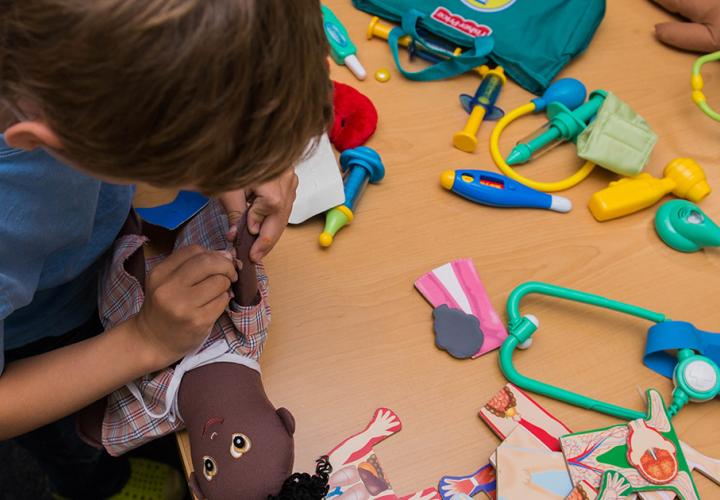1. Ease your child into new surroundings.
For lots of kids with special needs, it’s easier to embrace a new setting when they’re introduced to it gradually, by talking about it and looking at it before going in person.
- If possible, show your child pictures of the medical building, exam rooms and clinician. Spend a few days looking at the pictures together and talking about how your child will go there for an appointment with the doctor.
- Drive by, and encourage your child to point out everything they notice.
- If needed, ask the office if you can walk through the building or even see an exam room before the visit.
- Write the visit on a calendar and show your child when the visit is coming by counting the days until the visit.
> Related: 8 Tips to Help Kids With Special Needs Adjust to a New School Year
2. Explain what will happen at the appointment both verbally AND visually.
Images and verbal reminders help your child learn and remember new things. Here are picture stories about Connecticut Children’s.
- Call the doctor’s office to ask what the procedure is for the type of appointment that your child is having. Ask about any equipment that will be used, like a stethoscope, blood pressure cuff, or X-ray.
- Talk through everything you learn with your child. Include activities like measuring their height, weight, and blood pressure, along with any expectations to remove shoes or change clothes.
- Search online for visual aids. For example, you can show your child pictures of equipment by itself when it’s not in use, and when it’s in use with a doctor and patient.
> Related: Explaining Anesthesia to Younger Kids
3. Encourage communication and problem solving.
If you know the steps of the appointment, review them in order with your child. Write down “facts” about the situation – both ones that are positive to your child, and ones that may be perceived negatively.
- Ask your child what they think the easiest part of the visit will be. Praise them for their confidence in being able to participate in those parts of the appointment.
- Ask them what they think the hardest parts of the appointment will be. Work with your child to figure out what they can do to make the hard parts easier. This may include bringing a few comfort items from home, or sitting on your lap.
- Always encourage your child to ask questions and express their feelings or concerns! These are opportunities for them to figure out what will make things better.
4. Practice at home.
- Pretend that the doctor’s appointment is happening! Using a toy medical kit or just imagination, help your child act out the steps of the visit as best you can.
- To make it more fun, practice several times and have your child switch roles with you so that they are the doctor.
